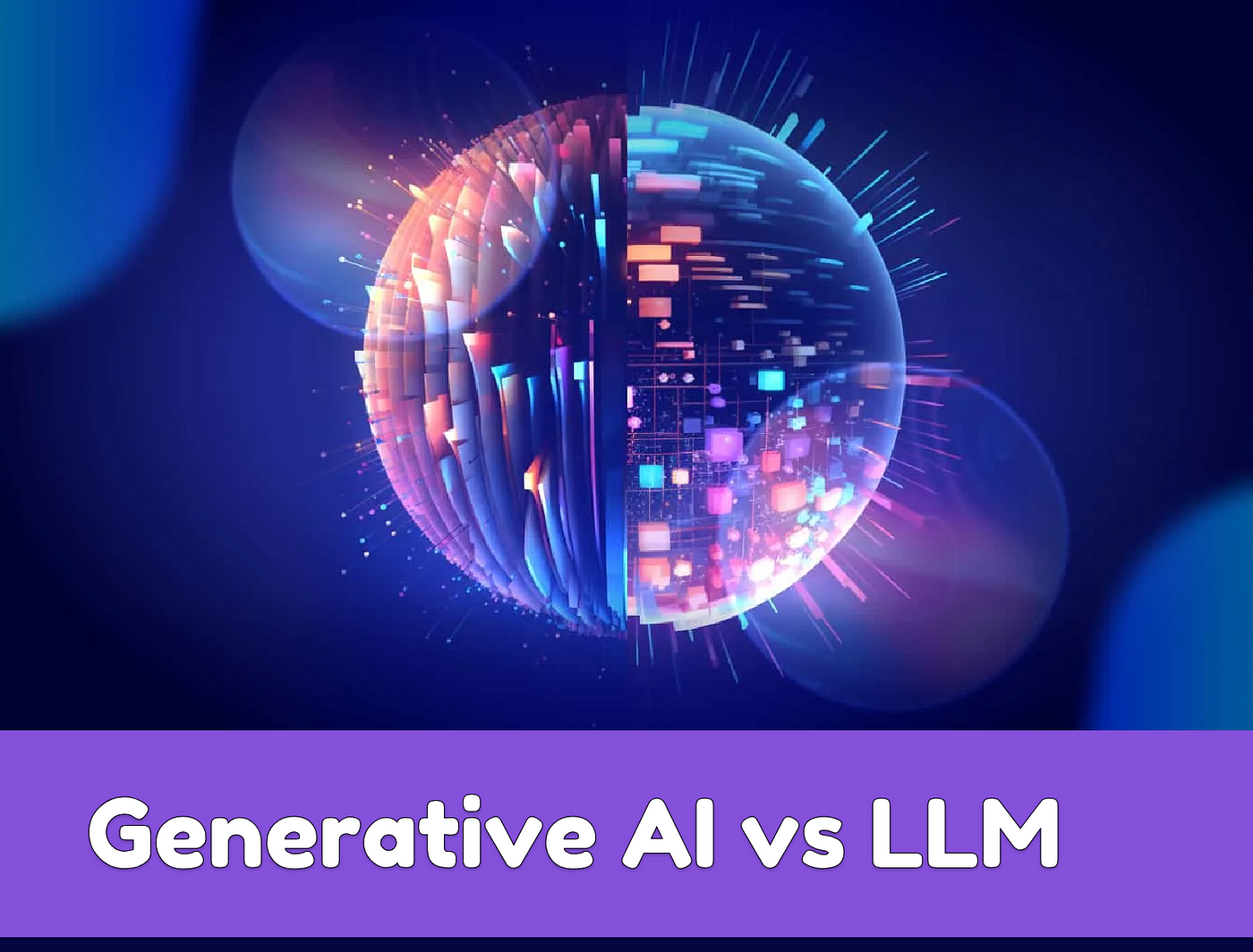Introduction ;
Finding the perfect tool for your project can be fairly challenging. Indeed, it is much like solving a puzzle. Any developer and creator will understand this feeling. With numerous terms, options, and clear explanations, one can easily forget why they started in the first place. One comes across a lot of phrases including LLM (Large language models) and Generative AI which are two of the most commonly confused terms. Though both have a remarkable value in their respective areas and utilise concepts that clearly relate to each other, it is easy to see how one may get confused.
Now imagine yourself using machine learning to create winning content or address a difficult issue. However, which one should you go for? In this guide, you will learn how to properly deal with these technologies by knowing the differences between them, their applications, their advantages and their limitations.
To define LLM and Generative AI;
LLM are powerful and innovative tools that enable the thorough comprehension and generation of textual content in natural language. Their education consists of processing huge data sets and recognizing patterns in the language model. This process makes it able to make predictions of what follows after a sentence or generate responses according to the context in which the message was intended.
Generative AI, on the other hand, takes into account many other technologies. Generally, LLMs are a part of generative AI and which is concerned with language generation, other kinds of generative models can generate images, music and more. Their multi functionality makes it possible for them to be used for creative purposes beyond text generation only.
Differences Seen Between LLM and Generative AI;
A large language model, typically known as LLM, is mainly concerned with the understanding and generation of text that mimics human interaction. LLMs are trained on enormous datasets and their goal is to give the most appropriate next word predictive to the context given. This is why they are suitable for chatbots, summarisation or even translation.
Generative AI, however, takes a more conceptual approach. It is made up of models meant for text generation and graphics creation, animating sound and producing videos. While LLMs work best on written tasks only, generative AI can produce content in different forms.
Another significant difference lies in their construction. Transforming networks are often invoked in LLMs so as to efficiently process textual information. Generative AI, on the other hand, may adopt interchangeable frameworks based on the requirements such as using GANs (Generative Adversarial Networks) for graphics and Auto Encoders for music.
Use Cases for LLM and Generative AI;
Large Language Models (LLM) are well suited for language tasks which require an appreciation for context as well as the creation of human language.
- They particularly perform well in automating customer service. LLM based chatbots have the capability to speak with users in a meaningful way while answering questions in a timely manner.
- Generative AI on the other hand, is rewriting the definition for creativity. It can be used as a tool by artists and writers for idea generation and content creation. This technology can create an entire artwork or a story based on several prompts.
- In marketing, both tools are difficult to do without. LLMs evaluate the data and trends and build individualised email strategies and campaigns while generative AI does the work of creating images for the advertisements and social media posts.
Pros and Cons of LLM and Generative AI;
LLMs or large language models are very capable tools that have shown great strengths when it comes to connected texts in creative forms. They are also very effective at interpreting larger datasets which makes them perfect for bots or content generation purposes.
On the other hand, LLMs also tend to suffer from context loss when engaging in longer exchanges. At times, their answers can be somewhat bland or lack depth.Generative AI, on the other hand, handles the task of producing any visuals or sound assets quite well as it strives for brand new concepts. Many times, it offers engaging outcomes that are hard to miss.
Generative models do however have very high resource requirements. This may cause this approach to have higher operating costs than simpler techniques.These two technologies also have ethical issues. Problems related with the bias of training data are a danger that must be closely managed by developers in various stages of deployment of the model.
It is important to consider your limitations and the specific needs of your project before making a decision on which tool to use.
Case Studies: Real-Life Examples of LLM vs. Generative AI in Use
Let’s start with LLM. One of the patients is a leading healthcare provider using LLM technology that functions to allow patients to communicate attentively within the health care system. They were able to schedule an advanced language model to improve inquiry about appointments. This improved patient satisfaction scores.
In another scenario, an e-commerce giant successfully harnessed both technologies to optimize its operations. They utilized large language models (LLMs) to streamline customer support by powering chatbots capable of managing a high volume of inquiries simultaneously. Meanwhile, generative AI played a pivotal role in enhancing marketing efforts, including the implementation of an AI Fashion Model Generator to create realistic, virtual models for showcasing products online. This advanced tool allowed the company to produce visually appealing and diverse fashion representations, while generative AI also supported the development of personalized advertisements, engaging marketing content, and compelling product descriptions.
These examples are pertinent in explaining the versatility of applications in different projects of llm vs generative ai technologies. Such projects are unique and focus on the specific industry’s goals and objectives.
Conclusion:
The choice between LLM and Generative AI boils down to the requirements of your project. There are indeed specific applications that both technologies can improve but they also have limitations.
Look at the level of complicity of your tasks. If much of work involves comprehending subtexts and interrelated areas, an LLM could be more suitable. On the other hand, if the significant proportions of your targets stress on creativity and producing new ideas, you could do well with generative algorithms.In the end, however, do not rush to the decisions. Ask yourself what features suit your goals most.




